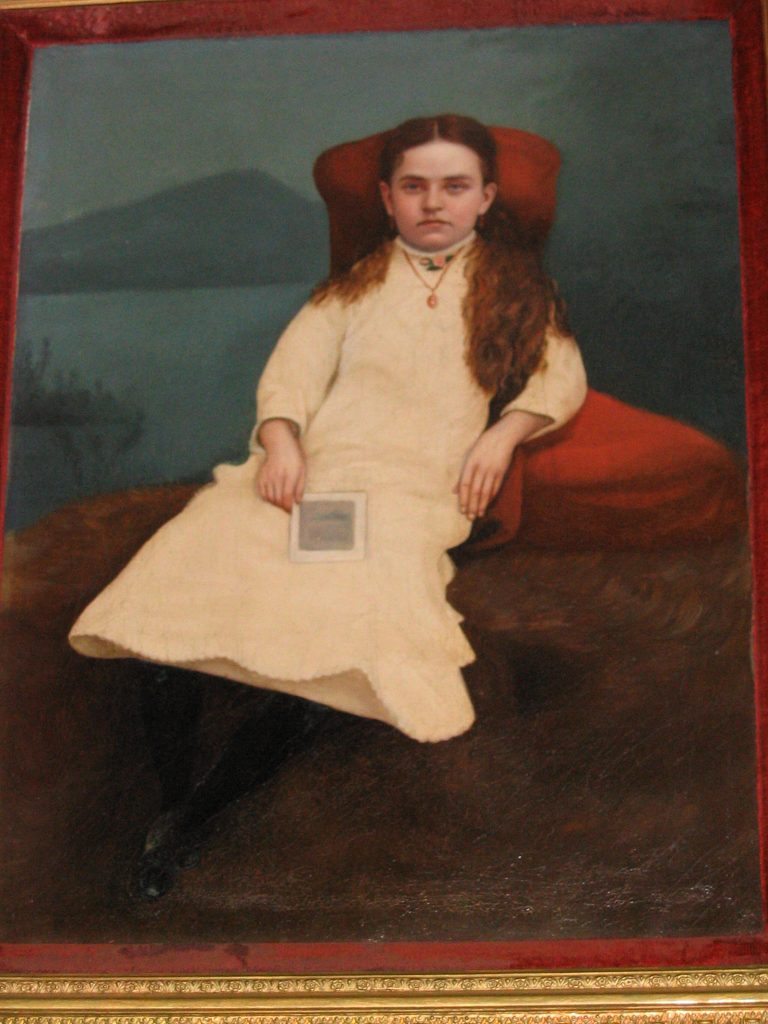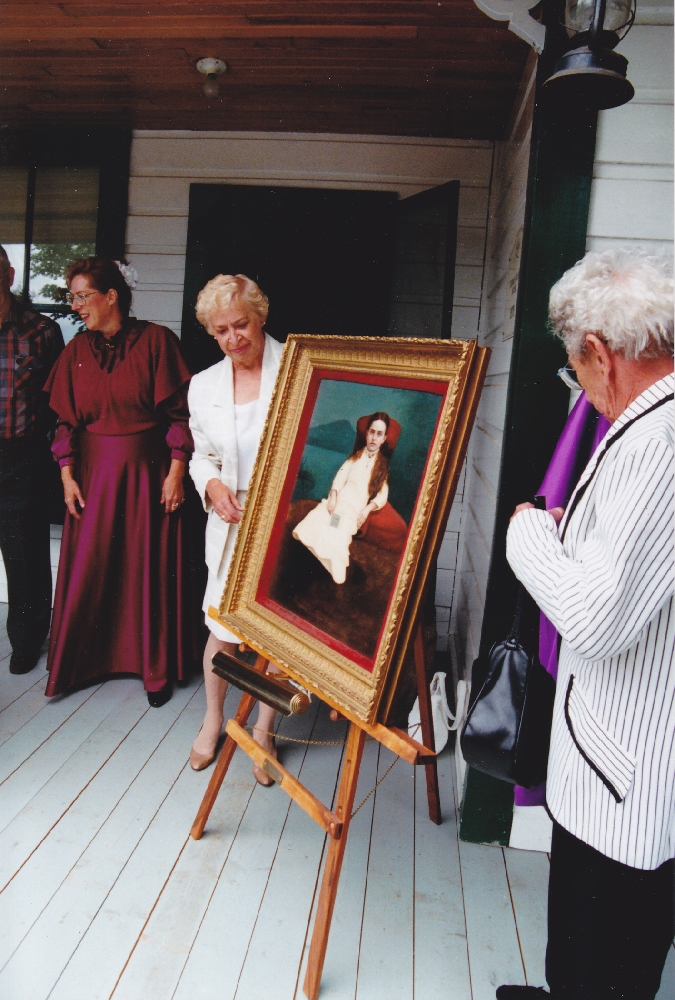
Mary Florence was the eldest child of Thomas and Anne Haney and the only one to have been born in Paris, Ontario. At the age of 1 year in 1876, she travelled with her mother and uncle to Port Haney.
Mary Florence passed away at the age of 11 from diphtheria during an outbreak of the disease. Her parents had this painting commissioned in her memory and it hangs in the living room of Haney House to this day. The painting was based on a tintype photograph taken not long before her death.
This painting is an example of a portrait technique known as “death mask portraiture”. Taking a likeness of the deceased, especially when the dead was a child or young adult, was very common in the Victorian period. The paintings tried to make them appear as they did in life.

Symbolism within the portrait shows that it was painted after her death. The flowers at her throat symbolize re-birth and immortality. The river behind her suggests a voyage and could symbolize both her voyage between this life and the next and the funerary voyage her coffin made between her home and the cemetery in Mission where she is buried. The small tintype photo in her hand indicates the source of her image for the portrait.
In 1992, the portrait was seen to be darkened by time and wood smoke so funds were raised for restoration and cleaning. The resulting work – much brighter and with ore detail visible – was unveiled by Thomas Haney’s granddaughters at Haney House on Canada Day.
